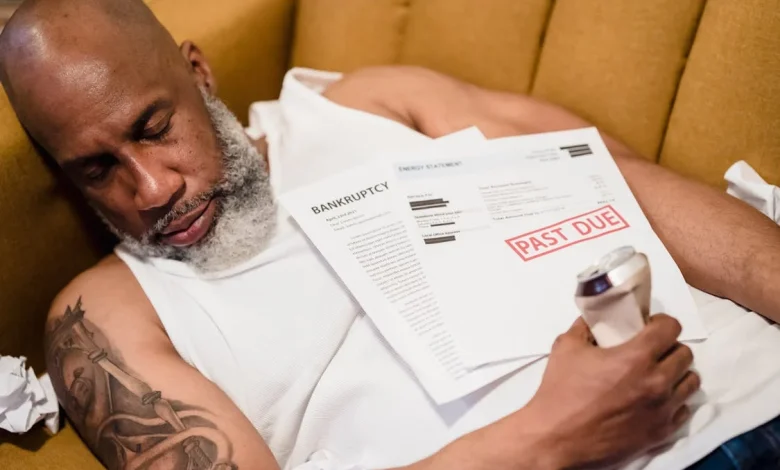Understanding Your Energy Bills: An In-Depth Guide to Breaking Down Costs & Saving Money For 2025

Why Understanding Your Energy Bills Matters
Energy bills can be overwhelming. Every month, your energy supplier sends you a bill filled with technical terms and numbers that may seem confusing at first glance. Understanding your energy bills is key to managing household expenses and finding opportunities to cut costs. This guide provides a deep dive into every component of your energy bills, explains why each part matters, and offers practical, expert-approved tips to help you save money and be more energy efficient.
Table of Contents
The Anatomy of an Energy Bills
In this section, we examine the components of your energy bills more closely. Understanding these elements is the first step toward effective cost management.
What Are Energy Bills?
Energy bills are invoices from your supplier detailing the cost of providing electricity, gas, or both to your home. They are composed of several key parts:
- Standing Charge:
This is a fixed daily fee that you pay regardless of how much energy you use. It covers the cost of maintaining the infrastructure and supply systems. - Unit Rate:
This variable cost is charged per unit of energy (measured in kilowatt-hours, or kWh) based on your consumption during the billing period. - Additional Charges and Taxes:
These include network costs, environmental levies, and VAT, which vary depending on your region and the current regulatory guidelines.
Image Suggestion:
Infographic illustrating the breakdown of an energy bill with sections labeled “Standing Charge,” “Unit Rate,” and “Additional Charges.”
Caption: “Understanding the different components of your energy bill is essential for managing costs effectively.”
Breaking Down Your Energy Bill: Step-by-Step Analysis
1. Calculating the Standing Charge and Unit Rate
Your energy bill is essentially the sum of fixed charges and variable costs.
- Standing Charge Calculation: Multiply the daily charge by the number of days in your billing cycle.
- Unit Rate Calculation: Multiply your total energy consumption (in kWh) by the unit rate.
- Total Bill: Add these amounts together, then include additional fees or taxes to get your final bill.
Real-Life Example:
If your standing charge is 20p per day and there are 30 days in the month, that’s £6. If you used 300 kWh at a unit rate of 15p, your variable cost is £45. Together, your core charge is £51 before extra fees.
2. Understanding Tariff Comparisons
Not all energy tariffs are the same. Different suppliers and plans use varying rates, which can significantly affect your final cost. When comparing tariffs:
- Examine the Standing Charge: A lower standing charge can be beneficial for low-consumption households.
- Check the Unit Rate: A lower unit rate is crucial for households with high usage.
- Read the Fine Print: Look out for discounts or penalties, contract length, and any additional fees.
Image Suggestion:
A comparative table showing two different tariffs side-by-side with details for the standing charge, unit rate, and additional fees.
Caption: “A detailed tariff comparison can reveal hidden savings on your energy bills.”
3. Historical Usage Analysis
Analyzing your energy usage over several billing cycles can help you:
- Spot Trends: Identify peak usage periods or anomalies that cause sudden bill increases.
- Forecast Future Costs: Understand whether your bills are steadily rising or if seasonal factors play a role.
- Tailor Your Consumption: Use smart meters and energy monitoring tools to get real-time insights.
Practical Tips to Reduce Energy Bills
Beyond understanding your bill, there are many practical steps you can take to lower your energy costs.
1. Compare and Switch Tariffs
Regularly comparing your current tariff with those offered by other suppliers is one of the best ways to reduce your energy bills. Utilize online comparison tools to get a clear picture of how your current charges stack up against market rates.
- Action Step: Look for seasonal promotions or government-supported incentive schemes that could further lower costs.
2. Energy-Efficient Home Improvements
Investing in energy-efficient appliances and improvements not only lowers consumption but can also result in long-term savings.
- Upgrade Appliances: Replace old, inefficient devices with Energy Star-rated options that consume less power.
- Improve Insulation: Proper insulation reduces the need for heating and cooling, directly impacting your unit rate consumption.
- Adopt Smart Energy Practices: Use smart thermostats and LED lighting to streamline energy usage.
3. Monitor Your Consumption
Leverage smart meters or energy monitors to keep a real-time check on your energy use. By understanding your habits, you can:
- Optimize Usage: Schedule heavy usage during off-peak hours to benefit from lower rates.
- Detect Wastage: Identify and fix issues like faulty heating systems or standby power leakage from unused devices.
External Link:
For further energy efficiency strategies, visit the U.S. Department of Energy’s Energy Saver Guide.
4. Long-Term Strategies
- Regular Maintenance: Regular servicing of boilers, HVAC systems, and other major appliances ensures they run efficiently.
- Behavioral Changes: Simple habits like turning off lights, adjusting heating settings, and reducing standby power can cumulatively lead to significant savings.
- Seek Expert Advice: Consider an energy audit to get professional insights tailored to your home’s specific needs.
Image Suggestion:
A photo of a technician performing an energy audit in a home.
Caption: “Regular energy audits can help identify areas for significant cost savings.”
In-Depth Case Study: Real-World Savings
The Smith Family’s Journey to Lower Energy Bills
The Smiths began by scrutinizing their monthly energy bills and noticed a pattern: a consistently high unit rate. After comparing tariffs, they switched to a plan with a lower variable cost and invested in energy-efficient appliances. In addition, they installed smart meters to monitor and modify their usage. Within six months, they reduced their energy expenses by 15%, proving that a comprehensive approach to understanding and managing energy bills can lead to substantial savings.
Image Suggestion:
Before-and-after graph showing the Smith family’s energy expenditure over six months.
Caption: “Case studies like the Smiths’ showcase the real impact of proactive energy management.”
Advanced Insights: Tools and Techniques
1. Leveraging Smart Meters
Smart meters offer detailed insights into your energy consumption patterns, which can help you better understand and manage your usage. They provide:
- Instant Readings: Real-time data on how much energy is being used.
- Historical Data: Trends and comparisons over time.
- Alerts and Notifications: Warnings when usage exceeds certain thresholds.
2. Utilizing Energy Management Apps
There are numerous apps available that sync with smart meters and appliances, offering:
- Consumption Breakdown: Detailed reports on energy usage by device or area.
- Budget Tracking: Alerts if you’re nearing or exceeding your monthly limits.
- Personalized Tips: Suggestions for reducing your bill based on consumption data.
Frequently Asked Questions About Energy Bills
Q: What is a standing charge, and why is it important?
A: A standing charge is a fixed cost that covers the supply of energy regardless of consumption. It’s important as it directly affects your overall bill, especially if your energy usage is low.
Q: How do I effectively compare energy tariffs?
A: Look at both the standing charge and unit rate. Ensure you account for additional fees, seasonal variations, and any incentives or discounts offered.
Q: Can I lower my energy bill without switching providers?
A: Yes, by using energy-efficient appliances, optimizing your usage habits, and leveraging smart meters to monitor consumption, you can reduce your overall costs significantly.
Q: Are there government incentives to help offset energy bills?
A: Many regions offer subsidies or incentives for energy-efficient upgrades. Check with your local energy authority for current programs and rebates.
Conclusion: Take Control of Your Energy Costs Today
Understanding your energy bill is not just about deciphering numbers—it’s about taking control of your household expenses and making informed choices. By breaking down your bill, comparing tariffs, and implementing energy-saving strategies, you can significantly reduce costs and move towards a more sustainable lifestyle. This guide has provided you with the knowledge and tools needed to tackle your energy bills head-on, paving the way for smarter usage and long-term savings.
For more expert advice on managing and reducing energy costs, explore additional resources and continue refining your energy consumption strategies here is 10 AI-Driven Solutions to Reduce Home Energy Costs by 50% (2025 Guide) for more saving money tips.



